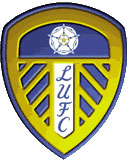 |
 |
 |
He was born in Kiveton Park, Sheffield, in 1878 and played inside-forward
for Stalybridge, Rochdale, Grimsby, Swindon, Sheppey United and Worksop
between 1897 and 1901 as an amateur, before turning professional with
Northampton. He moved on to Sheffield United and in May 1903 a £300 move
took him to Notts County before he joined Tottenham in March 1905. He
was Spurs' leading scorer with 11 goals in the Southern League in 1905-06.
He was not a great player and his moderate career was notable only for
the flamboyant yellow boots he wore. However, the Northampton directors recognised his tactical skills and
brought him back as player-manager in 1907. He led the Cobblers to the
Southern League championship in his second season before leaving for Leeds
City in 1912. After successfully canvassing for City's re-election to the Football
League, he confidently predicted that he could take the club into Division
One. Chapman understood the need for players of proven achievement, rather
than the hopefuls collected by Scott-Walford. Accordingly, his signings
included the Everton and Ireland goalkeeper Billy Scott, Scottish international
full-back George Law, former England centre-half Evelyn Lintott, who came
from Bradford City and who was soon joined by team mate and inside-left
Jimmy Speirs, and inside-right Jimmy Robertson from Barrow. Stalwarts such as Affleck, Croot and McLeod survived the Chapman revolution.
His new combination was rocked by a 4-0 defeat at Fulham on the opening
day of the 1912/13 season, but soon pulled itself together While the defence
proved alarmingly porous on occasions, as in the 6-2 defeat at Hull on
2 November and when City lost 6-0 at Stockport County on 15 February,
generally the team gave as good as it got. Battle honours included a 5-1
home win over champions Preston, which made the drubbing a week later
at Stockport - who were to finish second from bottom - all the more unsatisfactory. Despite its inconsistency, the verve with which Leeds City played drew
spectators back to Elland Road. When Chapman's team finished sixth, the
average attendance rose from below 8,000 in 1911/12 to more than 13,000
the following year, enabling the club to record a small profit, a remarkable
turnaround from the The nearest he came to achieving the goal of promotion was in 1913/14
when City finished fourth. The club finished with six fewer points than
champions Notts County, but only two behind runners up Bradford Park Avenue.
'Promotion has been denied them but taking into account the resources
of the club, fourth place should be considered satisfactory,' said the
Yorkshire Post. 'Not only have the club attained a higher position
than ever before but receipts and attendances have outstripped any previous
record.' Much of the improvement could be attributed to Chapman's management style:
he was a pioneer in introducing regular team talks and planned tactics
in consultation with the players. He also believed it essential that they
should relax, so introduced a weekly round of golf into the team's training
routine.Despite the disappointment, the directors were pleased because
gate receipts were well up and the club was able to record a £400 profit.
City had been sixth in 1912-13 and hopes were high that 1914/15 would
be the year they finally achieved promotion to the top division, but it
was not be. They slumped back to a very disappointing 15th place. During the War, Chapman worked at a local munitions factory and, although
he returned in 1916, he was suspended
as investigations went on into illegal payments to wartime guest players.
He quit on 16 December 1919 and became industrial manager of an oil and
coke firm in Selby, claiming he had been harshly dealt with by the FA
Commission because he was not in office when the payments were allegedly
made. Only after his appeal was upheld did he move back into management - this
time with Huddersfield. When Chapman joined them in 1920, Huddersfield
Town had little money, few resources and indifferent crowds in a town
devoted to Rugby League. They had joined the League in 1910 and had spent
their first six seasons in the Second Division before being promoted as
runners-up to Tottenham in 1920 in the first season after World War I. After taking over, Chapman led the club on an astonishing sequence of
success, winning the Division One title in 1924 and 1925, and taking the
FA Cup to Leeds Road in 1922. Chapman bought perceptively, welded his
assets together astutely and soon sent out one of the most successful
League sides of all time. It was stubborn, disciplined and highly mobile
with Clem Stephenson, once of Aston Villa, at the heart of everything.
He was a stocky tactician without much pace but his passes were as Chapman led Huddersfield to their first two Championships but then, before
they began their third great season, he surprised the football world by
joining Arsenal - and Arsenal, who had only just avoided relegation the
previous season, finished up as runners-up to Huddersfield. It was hardly
a coincidence. The year that Chapman left Huddersfield for Arsenal - 1925 - was also
the year the offside law was changed. The number of opponents necessary
to keep a player onside was reduced from three to two. Chapman, inevitably,
was the first manager to face the challenge of adapting his tactics to
work to the new law. Arsenal plugged the holes in defence caused by the new law by using an
extra defender. Their centre-half, instead of enjoying an attacking role
in midfield, became a centre-back - the 'stopper' - and an inside-forward
dropped back to make good the link between defence and attack. The day
of the old 2-3-5 formation was over. Now it was 3-3-4. The shape of the
game had changed. The idea itself, however, came from Charlie Buchan and not Chapman. Chapman's
first action as Arsenal manager had been to buy Buchan from Sunderland;
and Buchan, that shrewdest of forwards, suggested before the first match
of the 1925-26 season that Jack Butler, Arsenal's centre-half, should
be used only as a defender. Chapman disagreed. Buchan repeated his idea - without sucess - at every team meeting for
the next five weeks. But in early October Arsenal were beaten 7-0 by Newcastle
at St James's Park - and after the game Buchan said to Chapman: 'I want
to go back to Sunderland. I'm not much use to Arsenal.' Chapman replied:
'Oh no, you're playing against West Ham on Monday. I know what you want
and we'll have a special meeting to discuss it.' Herbert Chapman had finally agreed to Charlie Buchan's request to discuss
a new tactical approach to the game. The meeting took place immediately
following Arsenal's 7-0 hiding by Newcastle at St James's Park in October
1925, in their Newcastle hotel; and Chapman, after a long discussion,
agreed to experiment. Arsenal beat West Ham 4-0 at Upton Park two days
later - and they were on their way to mighty deeds. It was Buchan's idea
but it was Chapman who refined the system and made it work. Arsenal's first major success was the FA Cup of 1930 and, in the final
at Wembley, they beat Huddersfield 2-0 - Chapman's new creation getting
the better of his old. Huddersfield were ageing while Arsenal were rising
fast, and the following year they won Buchan had retired by now, replaced by David Jack, a vital and elegant
man who scored his goals with sharp-edged charm and even good manners;
and the key role in midfield went to Alex James, an inside-forward of
genius, an imp of a man with buttoned-down sleeves and famously baggy
shorts. Jack of England moved from Bolton for £10,890, the first five-figure
transfer fee, and James of Scotland from Preston for £9,000. The country
raised its hands in horror at such extravagance. Chapman smiled at a couple
of bargains. Chapman led his new Arsenal into the 1930's with huge and
justified confidence. Arsenal's almost complete dominance of the new decade went far beyond
their magnetic accumulation of trophies. A country crippled by recession
and shamed by its dole queues saw the club as a symbol of the prosperity
and privileges of London. Herbert Chapman's team was loved by its own but cordially hated by just
about everyone else. Arsenal were invincible, grandly untouchable and,
always, the team to beat. Their success was even resented in other board-rooms
where complacency and convention ruled; but this was just what the game
needed. Envy became a stimulant. Arsenal's professionalism was studied
and copied. The English game had a Highbury complex - and understandably
so. Arsenal were League Champions five times (1931, 1933-4-5 and 1938), runners-up
in 1932 and third in 1937. They won the FA Cup in 1930 and 1936 and were
beaten finalists in 1932. The first 38 championships had belonged to the
north and midlands but when, at last, the monopoly was broken, Arsenal
did the job properly. There was no television then to flatter and project but Arsenal's players
were household names. Alex James and David Jack, of course; Joe Hulme
and Cliff 'Boy' Bastin, thunder and lightning on the wings; Herbie Roberts,
the shy, red-headed giant who became Arsenal's principal stopper; and
impeccable full-backs such as Tom Parker, George Male and Eddie Hapgood. Some cost a lot of money, others were conjured out of minor football,
but all became essential components of a side which was horribly mean
in defence and cruel in counter-attack. Arsenal's football was sometimes described as 'smash and grab' and often
they were called 'Lucky Arsenal', but Chapman was pointing the way to
the future. His feeling for things to come was remarkable. Chapman once visited an old friend in Austria and returned to talk excitedly
about a night match he had watched. The pitch had been lit by the headlamps
of 40 cars. 'Do you realise," he asked, "that if the same number of lights
were up on 40-foot poles we could play football as if it was daylight?'
Not long after, the press were invited to watch an Arsenal practice match
at night illuminated by dangling lanterns. Chapman got the publicity he
wanted for an idea he was convinced would work. He later watched floodlit
matches in Belgium and Holland - 'cricket with a white ball would have
been possible,' he said. But authority was unimpressed, and it was nearly
20 years before the first official floodlit match was played in England. Chapman was also one of the first men to insist on first-class facilities
for spectators. He tried out numbered shirts five years before there was
approval from the Football League (in 1939); he advocated white balls
and all-weather pitches; he experimented with independent time-keeping
and goal judges; and, the biggest tribute of all to his gift for persuasion,
he had the name of the local underground station changed from Gillespie
Road to Arsenal. Nothing about Chapman was grey or vague. He demanded
power, loyalty, absolute obedience, punctuality at all times and devotion
to the club and profession. In return he was scrupulously fair and true
to his word. Chapman died, suddenly, in January 1934. Despite a chill, and against
advice, he insisted on watching his third team play in a cutting wind
at Guildford. 'I haven't seen the boys for a week or so,' he said. Pneumonia
set in and three days later he was gone. Arsenal still won the championship
that season; and the season after. There is a knowing smile on the face
of the bust of Chapman which now stands in the main entrance hall at Highbury. Herbert Chapman surrounded himself with intelligent footballers, such
as James, Jack, and Buchan. Charles Buchan believed that the secret of
Chapman's greatness was that he 'would always listen to other people and
take advantage of their ideas if he thought they would improve the team
in any way.' Chapman institutionalised his belief in shared discussion
by setting up scheduled meetings for the Arsenal players at midday every
Friday, when the team would discuss both the previous and the upcoming
match. Chapman even had a magnetic model football pitch on a table so
that he could show players exactly what he wanted them to do. Chapman's penchant for tactical planning and ability to transfer his
designs onto the pitch led to his teams earning the label `machine'. This
was heard first in 1910, at Northampton and it was often repeated through
the Arsenal years, where as Harding describes it 'though the In the final analysis, it was Herbert Chapman's boundless desire for
progress that hallmarked his contribution to the development of English
football. He would seemingly utilise any method, regardless of its origin,
to effect the betterment of his teams. He experimented, but he did not
do so blindly, for he possessed the vision and adaptability to incorporate
innovations into his grand designs. History has employed many a superlative
in the attempt to explain the central role of Herbert Chapman in the changes
to the English game, and doubtless his significance will continue to provoke
discussion. Unhappily, however, his influence is perhaps best illustrated
by the events which followed his death. Nobody really took up Chapman's
mantle - and English football stagnated as a result. Whilst the nation
complained that the stopper had a negative impact upon the game, the Hungarians
re-invented the role to momentous effect. It is not inconceivable that Chapman would have been moving in a similar
direction had he lived on. Firstly, he had always sought to keep abreast
of tactical innovation, and there is no reason to assume he would have
ceased doing so. Secondly, he kept a close eye on developments in the
European game, and was a close friend of Hugo Meisl, Chairman of the Austrian
FA. Throughout his managerial career, Chapman had always borrowed ideas if
he considered them worthy and Europe was no exception. His conviction
that 'there is a great future for football by artificial light in England'
was cemented after seeing floodlit matches in Belgium and Holland in 1930.
Chapman had always backed his belief in the importance of learning from
the continentals with actions. As early as 1909, he took his Northampton
team to Germany to play Nuremburg FC and in April 1921 his Huddersfield
side overcame the French Champions, Red Star, 2-0 in Paris. Chapman carried
these excursions The English game was at a crossroads when Chapman died. Despite its status
as one of the most advanced footballing nations, other countries were
catching and surpassing it in many areas. Though there were other progressive
figures in the game, none of their voices carried half the weight that
Chapman's did. He had recognised the need for drastic change, and saw the way forward
in the efficient running of the Italian and Austrian sides. But the English
FA's refusal to learn from these examples and stubborn insistence upon
choosing the national side with a selection committee, were typical of
its unenlightened nature. Nearly a quarter of a century before they were
humbled by the Hungarians at Wembley in 1953, Chapman had predicted a
downturn in England's fortunes if they continued to ignore the advances
being made in the European game. Perhaps it could be said that English
football is still paying the price for not acting on his warning.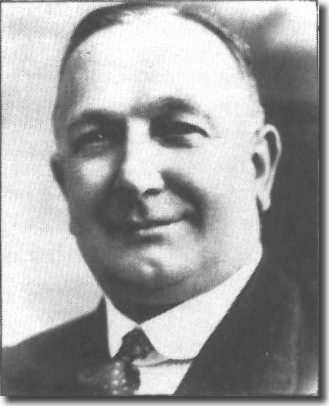 Herbert
Chapman is one of the greatest British football managers. His success,
ideas and personality revolutionised the game; but he was, more than anything
else, a builder of winning teams. Twice he created a side that was good
enough to win the League Championship in three consecutive seasons - first
Huddersfield (1924-26) and then Arsenal (1933-35). Liverpool (1982-4)
and Manchester United (1999-2001) are the only other clubs to have managed
this hat-trick. Strangely, Chapman was not at the helm for the third win
at either club.
Herbert
Chapman is one of the greatest British football managers. His success,
ideas and personality revolutionised the game; but he was, more than anything
else, a builder of winning teams. Twice he created a side that was good
enough to win the League Championship in three consecutive seasons - first
Huddersfield (1924-26) and then Arsenal (1933-35). Liverpool (1982-4)
and Manchester United (1999-2001) are the only other clubs to have managed
this hat-trick. Strangely, Chapman was not at the helm for the third win
at either club.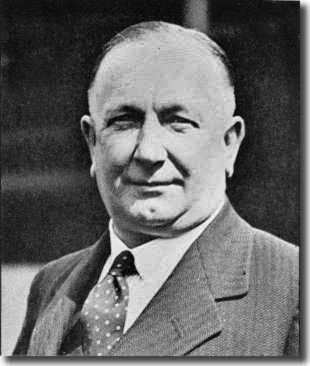 financial
problems of the previous season. 'Chapman ... has done a tremendous amount
of good work for the club; he has gained the confidence of everybody,'
wrote the Yorkshire Post.
financial
problems of the previous season. 'Chapman ... has done a tremendous amount
of good work for the club; he has gained the confidence of everybody,'
wrote the Yorkshire Post.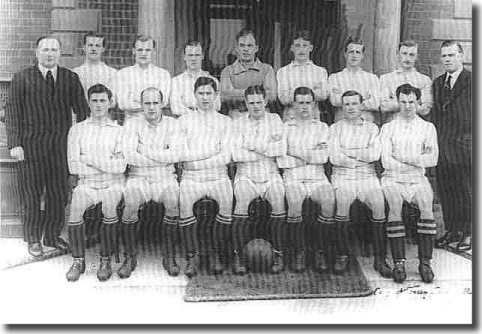 sweet
as stolen kisses.
sweet
as stolen kisses.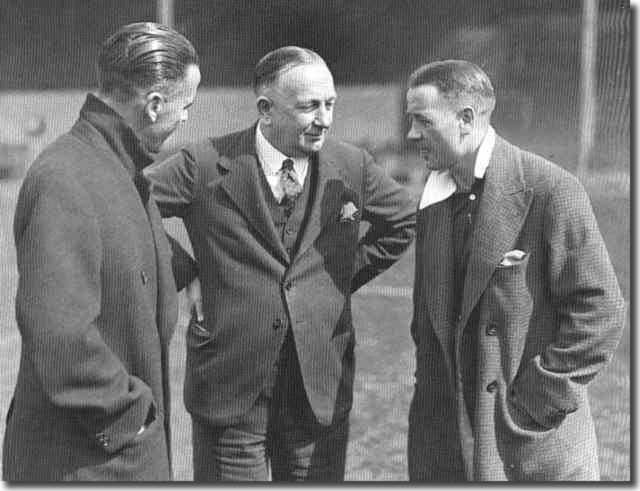 the championship for the first time.
the championship for the first time.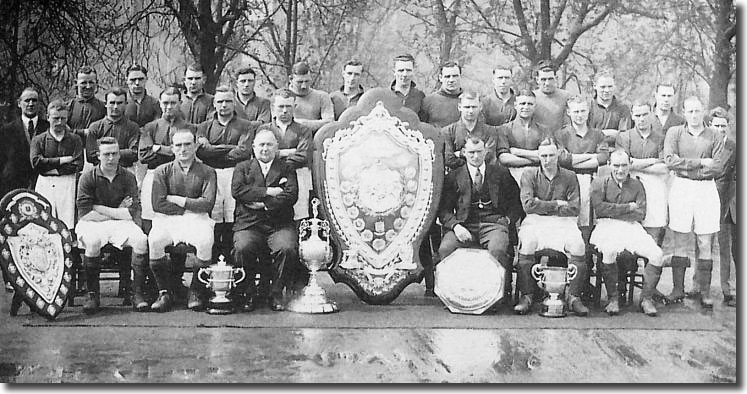 faces changed, the machine rolled on smoothly, sometimes more efficiently'.
faces changed, the machine rolled on smoothly, sometimes more efficiently'.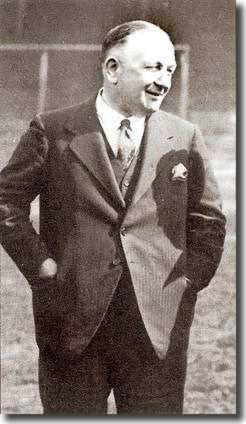 right through to his Arsenal days, but he believed that they were only
a prelude to a Western European Cup involving the Champions of nations
such as France, Spain, Germany, Scotland and England. Chapman saw such
developments as crucial to the long-term success of English football,
and he cared passionately about his nation's game. In fact, in 1933, despite
objections from selectors, he acted as unofficial manager to the England
team in Italy and Switzerland with considerable success. His tactical
pre-match team talks helped effect a 4-0 victory over a strong Swiss team,
and a 1-1 draw against Italy, in Rome. A year later the Italians were
World Champions and seven Arsenal players were in the England team that
proved what England could achieve, defeating the visitors 3-2 in `the
Battle of Highbury'. Chapman's teams enjoyed considerable success against
continental opposition.
right through to his Arsenal days, but he believed that they were only
a prelude to a Western European Cup involving the Champions of nations
such as France, Spain, Germany, Scotland and England. Chapman saw such
developments as crucial to the long-term success of English football,
and he cared passionately about his nation's game. In fact, in 1933, despite
objections from selectors, he acted as unofficial manager to the England
team in Italy and Switzerland with considerable success. His tactical
pre-match team talks helped effect a 4-0 victory over a strong Swiss team,
and a 1-1 draw against Italy, in Rome. A year later the Italians were
World Champions and seven Arsenal players were in the England team that
proved what England could achieve, defeating the visitors 3-2 in `the
Battle of Highbury'. Chapman's teams enjoyed considerable success against
continental opposition.